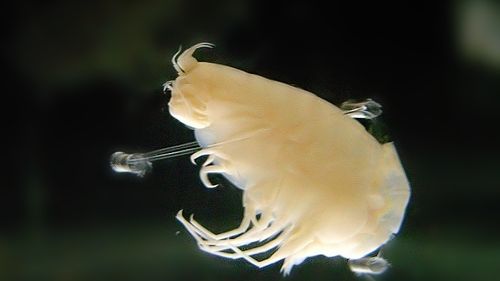Wherever humans go, we usually leave a trail of pollution behind, and it seems this applies even to the road untraveled, like unexplored parts of the ocean's deepest trenches. Crustaceans living 10 kilometers (6 miles) below sea level have been found to carry high levels of harmful industrial chemicals.
Although there have been missions to the deepest parts of the oceans, most of the Mariana and Kermadec trenches have never been visited by humans, or even machines. Yet when Dr Alan Jamieson of the University of Aberdeen collected amphipod crustaceans from 7,227-10,250 meters (4.5-6.4 miles) deep using traps set by deep-sea landers, the results were frightening.
Polychlorinated biphenyls (PCBs) and polybrominated diphenyl ethers (PBDEs) were detectable in every sample, across three species. Both PCBs and PBDEs are examples of persistent organic pollutants, chemicals produced by humans that disrupt the functioning of hormones in animals, and build up in the bodies of predators as they eat prey with lower concentrations, a process known as bioaccumulation.
PCBs were first used as dielectric fluids in the 1930s. Their use was phased out in the 1970s because of their environmental hazards, but before that some 1.3 million tonnes (1.4 million tons) had been created. Since they do not naturally degrade, and little has been done to destroy what remains, they continue to leach from landfills or improperly disposed of electrical equipment, eventually making their way to the sea.
The situation with PBDEs, which continue to be used as flame retardants, is even worse. Although their production is now restricted, it has not stopped, though the European Union and California, among others, have banned at least some PBDE production.
In Nature Ecology and Evolution, Jamieson reports that concentrations of PCBs as high as 905 parts per billion (ppb) were found in crustaceans from the Mariana Trench, and even the deepest sample collected had a concentration of 250 ppb dry weight. “In the Mariana, the highest levels of PCBs were fifty times more contaminated than crabs from paddy fields fed by the Liaohe River, one of the most polluted rivers in China,” the paper notes. The source is unclear, but maybe from POPs sinking when plastic in the Great Pacific Garbage patch degrades.
The Kermadec Trench, in the South Pacific, is among Earth's most remote places from sources of industrial pollution, so it is not surprising PCB levels found there were far lower. Yet PBDE concentrations were actually higher in the Kermadec than Mariana Trench, although still low compared to coastal waters.
We don't yet know what effect these PCB levels will have on life in the depths, nor how long they will last. Nevertheless, it is clear the Anthropocene has not only arrived, but covered the entire planet.




